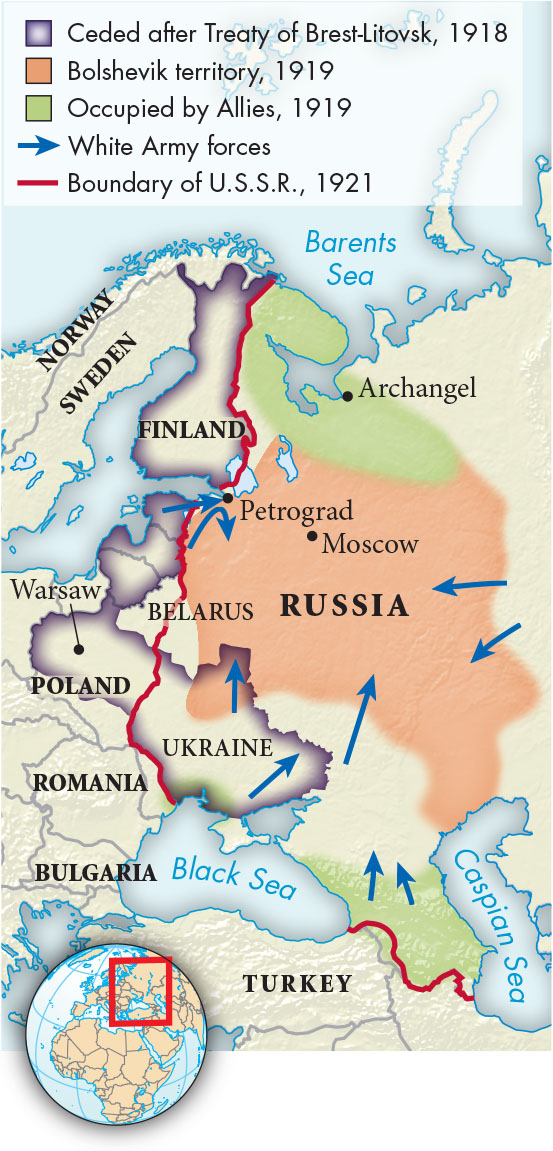Dictatorship and Civil War
The Bolsheviks’ true accomplishment was not taking power but keeping it and conquering the chaos they had helped create. Lenin was able to profit from developments over which he and the Bolsheviks had no control. Since summer 1917 an unstoppable peasant revolution had swept across Russia, as peasants divided among themselves the estates of the landlords and the church. Thus Lenin’s first law, which supposedly gave land to the peasants, actually merely approved what peasants were already doing. Lenin then met urban workers’ greatest demand with a decree giving local workers’ committees direct control of individual factories.

The Bolsheviks proclaimed their regime a “provisional workers’ and peasants’ government,” promising that a freely elected Constituent Assembly would draw up a new constitution. However, when Bolshevik delegates won fewer than one-
Lenin then moved to make peace with Germany, at any price. That price was very high. Germany demanded the Soviet government surrender all its western territories (which contained a third of old Russia’s population) in the Treaty of Brest-
The war’s end and the demise of the democratically elected Constituent Assembly revealed Bolshevik rule as a dictatorship. “Long live the [democratic] soviets; down with the Bolsheviks” became a popular slogan. Officers of the old army organized so-
The Bolsheviks’ Red Army won for several reasons. Strategically, they controlled the center, while the disunited Whites attacked from the fringes. Moreover, the Whites’ poorly defined political program failed to unite all of the Bolsheviks’ foes under a progressive democratic banner. Most important, the Communists developed a better army, against which the divided Whites were no match.
The Bolsheviks also mobilized the home front. Establishing War Communism — The Application Of The Total-
Revolutionary terror also contributed to the Communist victory. The old tsarist secret police was re-
KEY EVENTS OF THE RUSSIAN REVOLUTION
| 1914 | Russia enters World War I |
| 1916– |
Tsarist government in crisis |
| March 1917 | March Revolution; Duma declares a provisional government; tsar abdicates; Petrograd Soviet issues Army Order No. 1 |
| April 1917 | Lenin returns from exile |
| October 1917 | Bolsheviks gain a majority in the Petrograd Soviet |
| November 7, 1917 | Bolsheviks seize power; Lenin named head of new Communist government |
| 1917– |
Civil war |
| March 1918 | Treaty of Brest- |
| 1922 | Civil war ends; Lenin and the Bolshevik Communists take control of Russia |
Finally, foreign military intervention in the civil war ended up helping the Communists. The Allies sent troops to prevent war materiel that they had sent to the provisional government from being captured by the Germans. After the Soviet government nationalized all foreign-